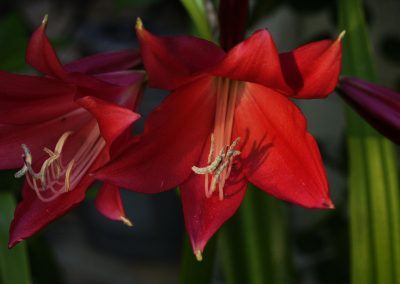Why did my rose change color?
Thanks to Jen Rhodes, who has some interesting things going on with her roses. They all seem to be
changing! About 15 years ago, Jen planted several different roses, including Madame Isaac Pereire,
which has deep pink flowers. But recently, she’s noticed that its flowers are a deep merlot color, and
that the leaves are also completely different than they used to be.
Could this be some sort of cross-pollination from her nearby Knock Out Roses? Well Jen, there’s no
cross-pollination going on here, what’s happening is much simpler, although less obvious at first. But to
answer your question, we first need to talk about how roses are developed and propagated. Rose
breeders are some of the most prolific in the nursery universe, coming up with seemingly hundreds of
new roses each season. And in the early days, all of the fabulous new roses released each year were
grafted onto the roots of a completely different rose. This was usually to keep size in check, or to
convey disease resistance, or some other nice benefit that the fabulous new cultivar did not possess.
And the most commonly used rootstock in the entire rose breeding industry was a rose called ‘Dr. Huey’,
which just happens to have deep merlot flowers. Jen’s rose changing issue is actually quite a common
one. After many years in the garden, and heavy pruning, most roses will begin to produce new canes
from the roots, not just from the trunk system. Since the roots are below the graft union, any new
canes that come from the roots will have the qualities and characteristics of the rootstock, not the plant
you purchased and that has been growing in your garden for years. If you want to get your plant back to
the rose you knew it to be, you’ll have to prune all of the canes that emerge from the roots every year.
But if the entire top growth has died or if it’s been pruned below the graft union, there will be no way to
get back to the original rose that you had. Nowadays, more and more breeders are offering roses as
own-root, which means that they’re not grafted onto Dr. Huey, or any other rootstock. And the leaves
and flowers of own-root roses will always remain the same as the plant that you purchased.








 Daphne Richards
Daphne Richards
 Trisha Shirey
Trisha Shirey